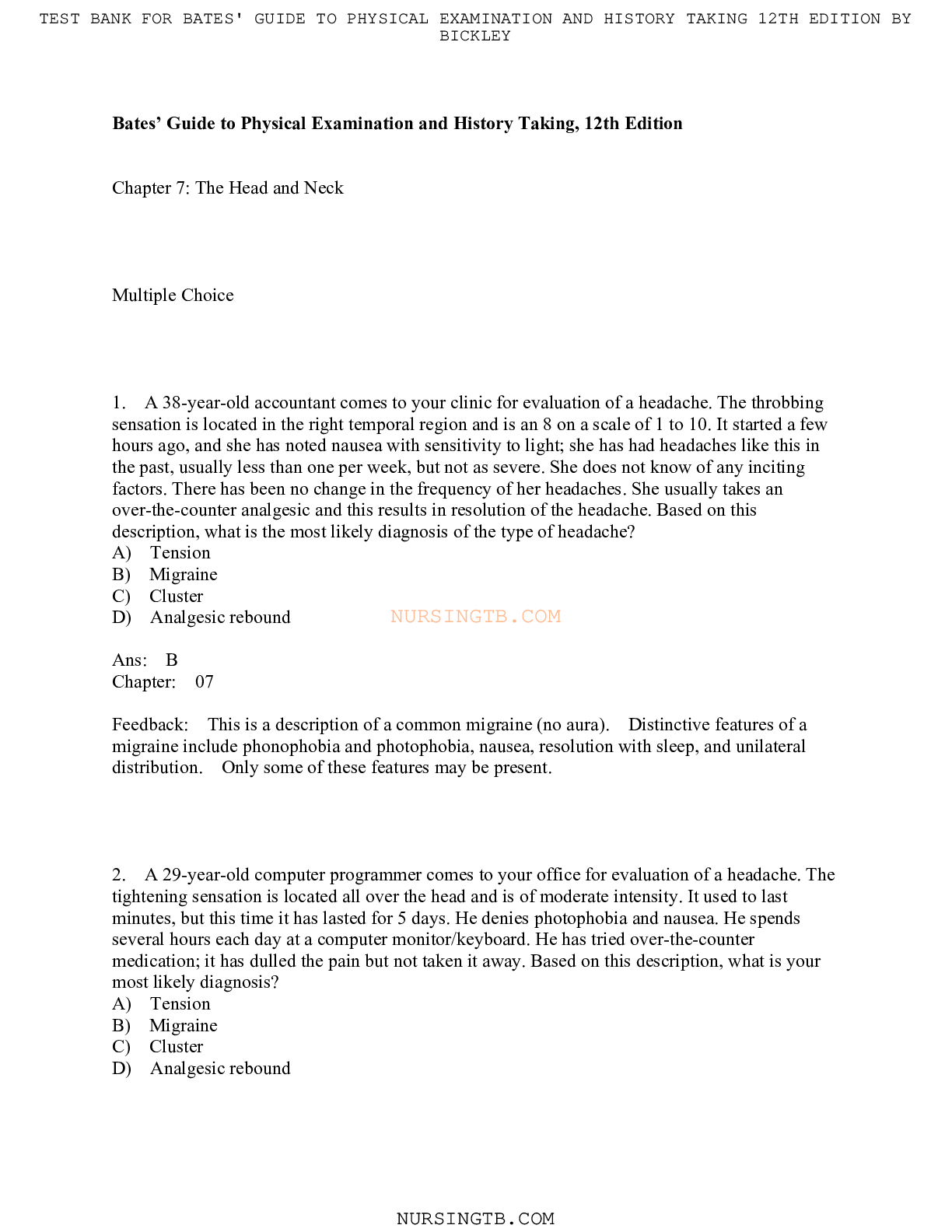Bates’ Guide to Physical Examination and History Taking, 12th Edition Chapter 7: The Head and Neck
Course
Project Management
Subject
Chemistry
Category
Questions and Answers
Pages
13
Uploaded By
ATIPROS
Preview 4 out of 13 Pages


Download all 13 pages for $ 6.50
Reviews (0)
$6.50
